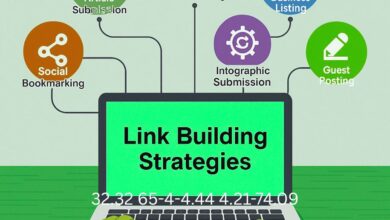New York State Education Department: Structure, Responsibilities, and Impact

The New York State Education Department (NYSED) stands as one of the most influential educational agencies in the United States. Overseeing the educational framework of one of the most diverse and populous states in the nation, it plays a central role in shaping the future of millions of students. From early childhood programs to higher education institutions, and from professional licensing to cultural institutions like libraries and museums, the scope of the department’s work extends far beyond what many people realize.
Understanding the New York State Education Department is crucial for parents, students, educators, and policymakers who are invested in improving learning outcomes and maintaining high standards across the educational system. This article provides a comprehensive look at the structure, functions, programs, challenges, and future outlook of NYSED.
Historical Background
The roots of the New York State Education Department stretch back to the early 19th century. New York was one of the first states to establish a formal state-level educational authority, with the Board of Regents of the University of the State of New York originally created in 1784. Over time, the Regents’ responsibilities expanded, and in 1904, the New York State Education Department was officially formed to administer and unify the work of schools, colleges, libraries, and cultural institutions under a centralized authority.
This historical foundation has made New York a leader in public education policy. The state has consistently pioneered reforms in curriculum standards, teacher certification, and accountability measures that have influenced other states nationwide.
Mission and Core Values
The mission of the New York State Education Department is to raise the knowledge, skills, and opportunities of all people in the state. NYSED aims to provide equitable access to high-quality education, ensuring that every student—regardless of race, ethnicity, socioeconomic status, or geography—can achieve success.
The core values include:
-
Equity and Access: Closing achievement gaps and ensuring equal opportunities.
-
Excellence: Maintaining high standards for curriculum, assessment, and teacher qualifications.
-
Accountability: Holding schools and institutions responsible for student outcomes.
-
Innovation: Encouraging new teaching models, digital learning, and workforce development.
Organizational Structure
The New York State Education Department is governed by the Board of Regents, a body of 17 members elected by the State Legislature. The Regents set policy, while the Commissioner of Education serves as the chief executive officer.
Key offices within NYSED include:
-
Office of P-12 Education: Manages elementary, middle, and high schools.
-
Office of Higher Education: Oversees colleges, universities, teacher preparation programs, and student aid.
-
Office of Professions: Licenses and regulates over 50 professions, including medicine, engineering, architecture, and law.
-
Office of Cultural Education: Oversees libraries, archives, and museums to preserve the state’s cultural heritage.
-
Office of State Assessment: Designs and administers standardized tests across grade levels.
This broad structure highlights how NYSED impacts nearly every stage of learning, from preschool to professional careers.
Key Responsibilities of NYSED
1. Curriculum and Standards
One of NYSED’s most important tasks is setting academic standards for schools across the state. Through the Next Generation Learning Standards, the department ensures that students are prepared for college, careers, and civic engagement. These standards emphasize literacy, mathematics, science, and social studies, as well as 21st-century skills like critical thinking and problem-solving.
2. Teacher Certification and Professional Development
Teachers in New York must meet strict certification requirements managed by NYSED. The department also coordinates continuing professional development, ensuring educators remain up to date with new teaching practices, technologies, and state requirements.
3. Student Assessments and Accountability
NYSED administers statewide standardized tests to measure student progress and school performance. Data from these assessments guide funding allocations, identify struggling schools, and hold districts accountable for improvement.
4. Higher Education Oversight
The department regulates state universities, private colleges, and community colleges. It also oversees programs like Tuition Assistance Program (TAP) and supports initiatives to make higher education more affordable and accessible.
5. Special Education Services
NYSED provides critical support for students with disabilities through Individualized Education Programs (IEPs) and ensures compliance with federal laws like the Individuals with Disabilities Education Act (IDEA).
6. Professional Licensing
Beyond traditional education, NYSED’s Office of Professions regulates more than 50 licensed professions. This ensures that New Yorkers receive high-quality services from doctors, nurses, accountants, social workers, and others.
7. Cultural Institutions
By managing libraries, archives, and museums, NYSED preserves New York’s cultural and historical legacy while ensuring public access to knowledge and learning resources.
Major Programs and Initiatives
My Brother’s Keeper Initiative
Focused on improving outcomes for boys and young men of color, this initiative addresses equity gaps in education and provides mentoring, leadership, and college readiness programs.
Early Childhood Learning
NYSED supports universal pre-kindergarten programs across the state, laying a strong foundation for lifelong learning.
Digital Equity and Learning Technology
The department has made significant investments in technology infrastructure, particularly during and after the COVID-19 pandemic. Expanding broadband access, providing digital tools, and supporting teacher training in technology integration are key goals.
Higher Education Opportunity Programs (HEOP)
These programs help low-income and underrepresented students succeed in higher education by providing academic and financial support.
Challenges Facing NYSED
-
Educational Inequality: Achievement gaps persist across racial, socioeconomic, and geographic lines. Urban districts often face underfunding, while rural schools struggle with limited resources.
-
Testing and Accountability Pressure: Standardized testing has been criticized for narrowing curriculum focus and creating stress for students and teachers.
-
Teacher Shortages: Like many states, New York faces challenges in recruiting and retaining qualified educators, especially in STEM fields and special education.
-
Funding Disparities: Although New York spends more per student than most states, funding inequities between districts remain a pressing issue.
-
Adapting to Technological Change: As digital learning becomes central, ensuring equitable access and proper training for teachers is an ongoing challenge.
Achievements and Success Stories
-
New York ranks among the top states in high school graduation rates and college enrollment.
-
The Board of Regents’ reforms have pushed for culturally responsive curricula and social-emotional learning in schools.
-
NYSED has made strides in expanding pre-kindergarten programs, benefiting thousands of children each year.
-
Professional licensing by NYSED ensures that millions of residents benefit from regulated, high-quality professional services.
The Future of NYSED
Looking ahead, the New York State Education Department is expected to focus on equity, digital transformation, and workforce development. Priorities include closing the achievement gap, expanding access to early childhood education, integrating AI and emerging technologies into classrooms, and preparing students for a rapidly evolving job market.
Additionally, collaborations with community organizations, businesses, and higher education institutions will remain crucial in shaping programs that meet both academic and workforce needs.
Conclusion
The New York State Education Department is far more than just an agency that oversees schools. It is a comprehensive institution that touches nearly every aspect of learning, culture, and professional life in New York. By setting standards, ensuring accountability, regulating professions, and supporting cultural institutions, NYSED plays a central role in shaping the lives of millions of people.
While challenges remain, from funding inequities to teacher shortages, the department continues to drive innovation and equity in education. For parents, students, educators, and professionals alike, understanding the role of NYSED provides valuable insight into how education shapes the opportunities and future of New York.
As always, here at The Globe Gist, we believe that examining institutions like NYSED helps readers better appreciate the complex systems that influence our everyday lives.
1. What is the New York State Education Department?
The New York State Education Department (NYSED) is the state agency responsible for overseeing public schools, higher education institutions, professional licensing, and cultural organizations such as libraries and museums.
2. Who governs the New York State Education Department?
NYSED is governed by the Board of Regents of the University of the State of New York, a 17-member body elected by the State Legislature.
3. What does the Commissioner of Education do?
The Commissioner of Education serves as the chief executive officer of NYSED, implementing policies set by the Regents and managing the department’s day-to-day operations.
4. What are the main responsibilities of NYSED?
NYSED sets academic standards, certifies teachers, administers statewide assessments, oversees higher education, regulates professional licensing, and supports cultural and historical preservation.
5. Does NYSED only regulate schools?
No. In addition to schools, NYSED regulates over 50 professions—including medicine, law, engineering, and social work—through its Office of Professions.
6. What are the Next Generation Learning Standards?
These are academic benchmarks set by NYSED that guide what students should know and be able to do at each grade level in core subjects like English language arts and mathematics.
7. How does NYSED support special education?
NYSED ensures students with disabilities receive appropriate services under Individualized Education Programs (IEPs) and that schools comply with federal laws like IDEA.
8. What programs does NYSED offer for college students?
The department manages financial aid programs like the Tuition Assistance Program (TAP) and supports opportunity programs that help underrepresented students succeed in higher education.
9. How does NYSED promote equity in education?
Through initiatives like My Brother’s Keeper, universal pre-kindergarten programs, and culturally responsive teaching, NYSED works to close achievement gaps.
10. Where can I find more information about NYSED policies and programs?
Parents, students, and educators can visit the official NYSED website for updates on standards, assessments, licensing, and educational initiatives across the state.
Thanks for read our article if you want more like this kind of article visit our site The Globe Gist, and comment us. We provide authentic & comprehensivf information to our readers.



